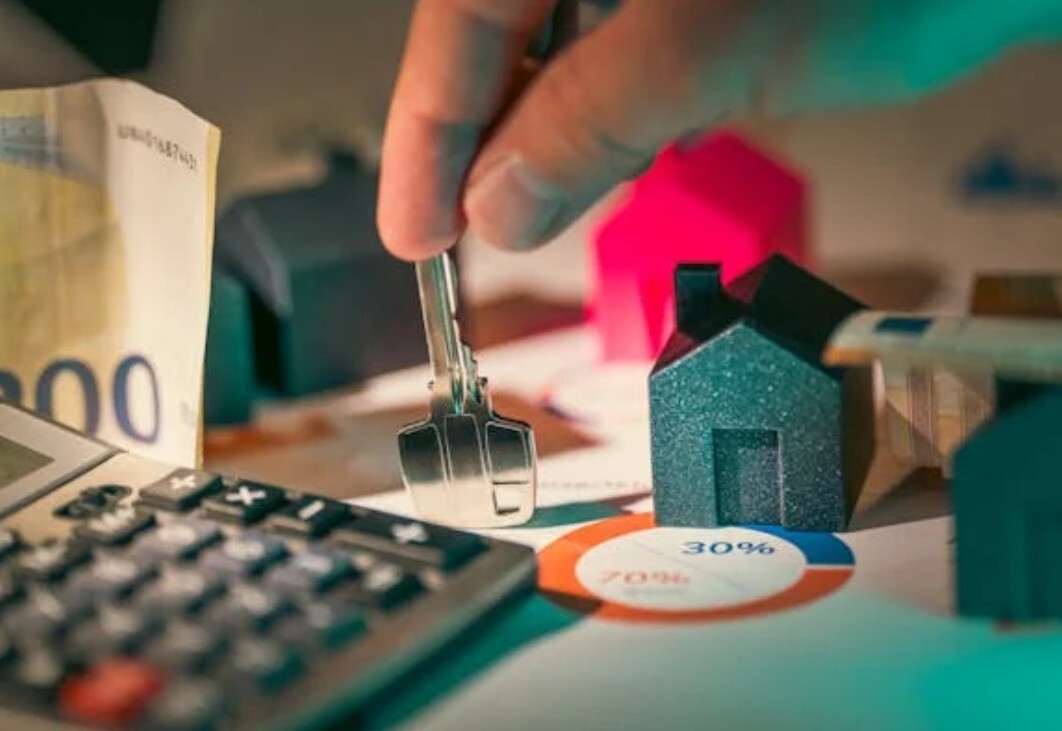What Is Vacancy Rate for Rentals? Formula + Tips to Reduce It
Vacancy rate is a crucial metric for any landlord or real estate investor to track, as it can tell you about the health of your investment and how...

A rental property is one of the few investments that can give income today and down the road, all while allowing you to use leverage (debt) to purchase it. But all in all, how much do rental properties make? In this article, we’ll dive into the different ways that real estate investing makes you money and the different factors that influence your returns. Keep reading!
Summary:
The beauty of owning rental properties is that they not only give you monthly rental income but also help you build meaningful long-term wealth. Here are some of the main ways these properties make money for you:
Cash flow is the actual monthly profit you make from the property. Take your monthly rental income and subtract all expenses, including maintenance, repairs, operating costs, capital expenditures, and your mortgage payment. The amount left over is your monthly cash flow!
Use our rental property cash flow calculator to ensure you’re not missing any expenses!
As the housing market grows, so do home prices. If your property is worth more today than when you bought it, you benefit from the increased equity. This means you’ll get a bigger payday if or when it comes time to sell!
If you have a cash-flowing rental property, your tenants are essentially paying your mortgage down for you. Every time you pay off more of your principal amount, you’re growing your net worth!
Rental properties come with enormous tax benefits, too, such as the ability to claim depreciation for your property’s wear and tear. Taxes, insurance, and mortgage interest, as well as any operating and business expenses, are also tax-deductible, allowing you to reduce your taxable rental income and get a bigger return.
Disclaimer: These are example numbers and do not represent actual property figures.
Let’s use a turnkey rental as an example. Turnkey rentals are newly built or renovated rentals that either have tenants in place or are ready to be leased out immediately. Rent to Retirement offers new build turnkey rentals, often at a discount, which allows you to walk into equity!
You could purchase a property for $350,000 that appraises for $370,000. That’s $20,000 of appreciation right from the jump. After year 1, we can assume a conservative 2% appreciation rate (although the average is 3% - 5%).
After your mortgage payment, insurance, taxes, vacancy, and property management, your property’s monthly expenses might be $2,000. Since this is a new turnkey rental, maintenance will be very low, if not $0, in the first year. If the property rents for $2,300 a month, this leaves you with $300 in monthly cash flow (or $3,600 annually). Assume a small $50 increase in cash flow each year.
With a 20% down payment and a 6.5% interest rate, you would have $3,912 in principal paydown through year one.
|
Cash Flow |
Appreciation |
Loan Paydown |
Total Return |
Cash-on-Cash Return (20% Down, JUST Cash Flow) |
ROI (Return on Investment) |
|
|
Turnkey Rental Year 1 |
$3,600 |
$20,000 |
$3,129.63 |
$26,729.63 |
5.1% |
38% |
|
Turnkey Rental Year 2 |
$3,650 |
$7,400 |
$3,339.23 |
$14,389.23 |
5.2% |
20% |
|
Turnkey Rental Year 3 |
$3,700 |
$7,548 |
$3,562.86 |
$14,810.86 |
5.3% |
21% |
Note: With Rent to Retirement’s new build incentives, buyers can get lower closing costs, an interest rate buydown, rent credits, property management credits, and more, increasing your cash-on-cash return!
Get Rent to Retirement’s exclusive 5% down financing on new build turnkey rentals!
Disclaimer: Projected returns are used merely as educational examples, real returns may be larger or smaller based on property, area, management, purchase price, etc.
Your investing strategy has a significant influence on how much money your rentals can make. Keep in mind that different types of rental properties require different levels of effort, so a bigger return may or may not be worth the work you’ll have to put in!
Traditional rentals are properties you lease out to long-term tenants. Lease terms are typically 12 months or longer, so you get steadier (but often lower) monthly rental income for as long as the property is occupied and tenants are paying their rent.
Turnkey properties are also usually long-term rentals, but because these properties have been recently built or renovated (and often come with tenants in place), they tend to have lower vacancy rates and maintenance needs—giving you a slightly larger return than the average long-term rental!
Mid-term rentals are properties you lease out for anywhere between one month and one year. These properties offer a little more upside in terms of returns, as you’re often renting to traveling nurses and business professionals, with higher-paying contracts. However, you’ll need to furnish these properties and network to find people and/or employers who need temporary stays, so mid-term rentals require a little more work than long-term rentals—and certainly more than turnkey rentals!
Short-term rentals are properties guests can rent for one to 30 days via Airbnb, VRBO, or another vacation rental booking site. While this strategy allows you to charge higher nightly rates, keep in mind that the income can be seasonal (depending on your market), and these properties require much more effort than traditional and turnkey rentals.
Where you invest largely determines how your rentals make money (and how much). Keep in mind that trends often vary from one zip code or neighborhood to the next. For example, an area like New York City has drastically different home prices, cash flow, and appreciation than an area like Upstate New York. Here are some of the best places to buy a rental property, depending on your investing goals:
If you want your rental property to be worth significantly more 10, 20, or even 30 years from now, you might choose a West or Northeast market like New York City, Boston, or one of many California markets. These areas have high home prices but strong job markets to help drive up prices.
If you’re mainly looking for cash flow, consider investing in a Midwest market. Many of these areas have cheaper home prices but respectable rents, which could give you a large cushion between your monthly rental income and expenses.
For years, states like Georgia, Florida, and South Carolina have offered a great blend of cash flow and appreciation. Not only are home prices often lower with rents that comfortably cover your mortgage payment and expenses, but with more people migrating to this area of the country, home prices could continue to rise in the future.
There’s no one way to measure the return on your rental properties. You can measure by cash-on-cash return, return on investment (ROI), return on equity, or another metric. Cash-on-cash is often used by investors, as it shows you the real, tangible return on the money you personally put into the deal.
Want your rentals to make as much money as possible? The following could help you maximize your returns:
A new or updated property can command higher rents since it has newer amenities and requires fewer repairs. Buy a recently built or renovated turnkey rental, or if you have the time and know-how, do your own renovations!
Time is money, and you could save a ton of time by hiring a property manager to oversee your property’s day-to-day. This is almost a necessity if you’re investing remotely.
When a tenant moves out, you’ll need to make repairs, screen applicants, and prepare your unit for the next tenant. This is not only time-consuming but also expensive, especially if your unit stays vacant for a while. With better tenant retention, you can minimize these turnover costs!
Adding desirable amenities is a great way to make your property stand out, attract higher-quality tenants, and increase rents. These could be yards, offices, driveways or garages, or laundry rooms. Even something as simple as allowing pets can help you charge more!
Want money-making rental properties but not another job? Since turnkey rentals are recently built or renovated, they often require very little upkeep. Plus, with property management and tenants already in place when you close, you won’t have to deal with things like screening tenants or communicating with residents.
Rent to Retirement also offers 5%-down financing and allows you to choose one of several new build incentives—an interest rate buydown, price discount, closing credits, or cash back at closing!
How much profit your rental property makes depends on several factors, such as the property’s location and condition, as well as your strategy and market demand. To make a profit, you’ll want to ensure the property brings in enough rent to cover your mortgage payment, maintenance, repairs, capital expenditures, and any other property-related expenses.
Rental properties can be very profitable, potentially generating enough income for you to quit your W-2 job or retire—particularly if you have multiple cash-flowing properties. With Rent to Retirement’s new build loans and incentives, you could buy multiple rental properties with 5% down and reach your investing goals much faster!
With an 8% cash-on-cash return, you would need to invest $1,250,000 to make $100,000 a year. If you’re buying $400,000 houses with 25% down ($100,000 each), that’s 12-13 houses. Just be mindful that cash-on-cash return only includes the cash flow. You’ll also have appreciation, loan paydown, and tax benefits!

Vacancy rate is a crucial metric for any landlord or real estate investor to track, as it can tell you about the health of your investment and how...

Turnkey rentals are among the best real estate investments, whether you’re looking for a beginner-friendly investing strategy or aiming to add...

If you’re pondering on generating more income by investing in rental properties, you might be weighing between a long-term rental strategy and...